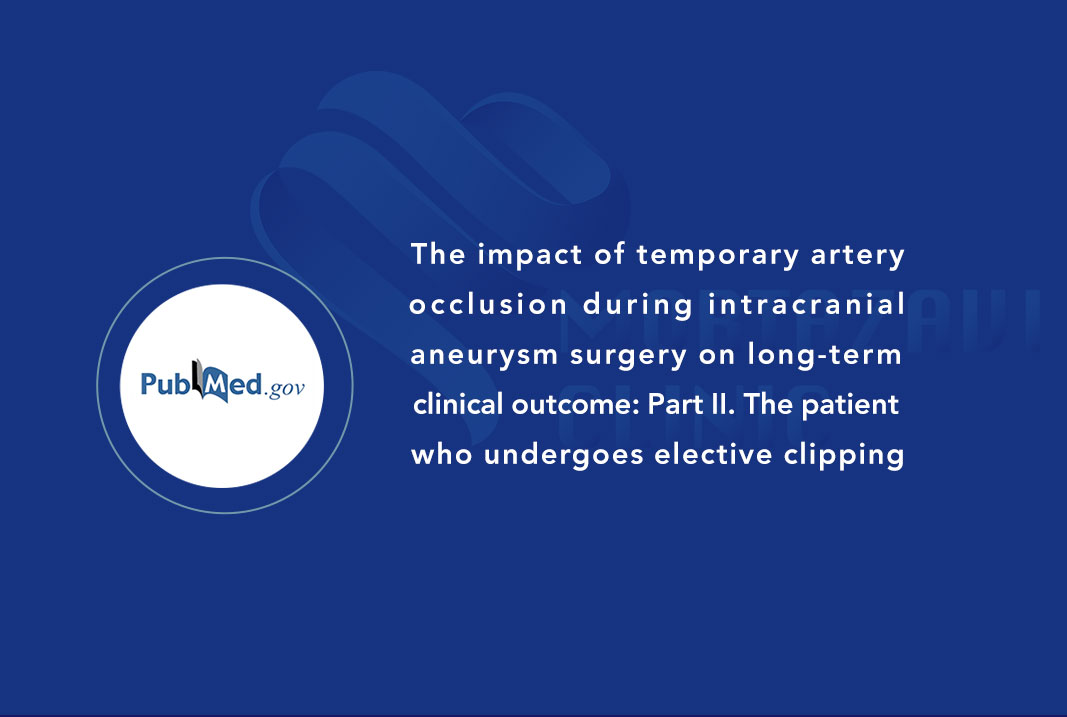The impact of temporary artery occlusion during intracranial aneurysm surgery on long-term clinical outcome: Part II. The patient who undergoes elective clipping

Abstract
Background: Temporary artery occlusion (TAO) during intracranial aneurysm surgery is a key element in facilitating aneurysm dissection and clipping. Despite its significance, knowledge of its effects on long-term clinical outcome in patients undergoing elective clipping for unruptured aneurysms is limited. This study evaluated the safety of this technique in this patient population by 1 surgeon.
Methods: Patients managed for an intracranial aneurysm were followed from 2000-2009. This study included a cohort of patients found to have unruptured intracranial aneurysms who underwent TAO during their elective clipping procedure. Potential risk factors to affect outcome were considered. Effects of TAO on long-term clinical outcome were evaluated using the Glasgow Outcome Scale (GOS) obtained retrospectively by analyzing medical records at the last follow-up visit or discharge. Analyses included descriptive statistics, binary logistic regression, and ordinal logistic regression.
Results: Inclusion criteria were met by 246 patients (75.2% female, age 54 years±10.9) with electively clipped, unruptured aneurysms. Mean follow-up was 53 months±67.5. Mean temporary artery clipping time was 16.1 minutes±14.7. Of patients, 86% had a good outcome and made a complete recovery at last follow-up (GOS 5); 9% of patients were moderately disabled (GOS 4); 5% of patients were severely disabled (GOS 3), were in a vegetative state (GOS 2), or had died (GOS 1). TAO time had no effects on overall long-term clinical outcomes (P=0.59). Although patients with posterior circulation aneurysms had a worse outcome compared with patients with anterior circulation aneurysms (P=0.008), age (P=0.176) and aneurysm size (P=0.497) were not significantly associated with clinical outcome.
Conclusions: This study did not demonstrate any relationship between limited duration of TAO and clinical outcome. Posterior circulation aneurysms are associated with worse long-term clinical outcomes in patients with electively clipped, unruptured aneurysms.
To read the full article, refer to the link below:



